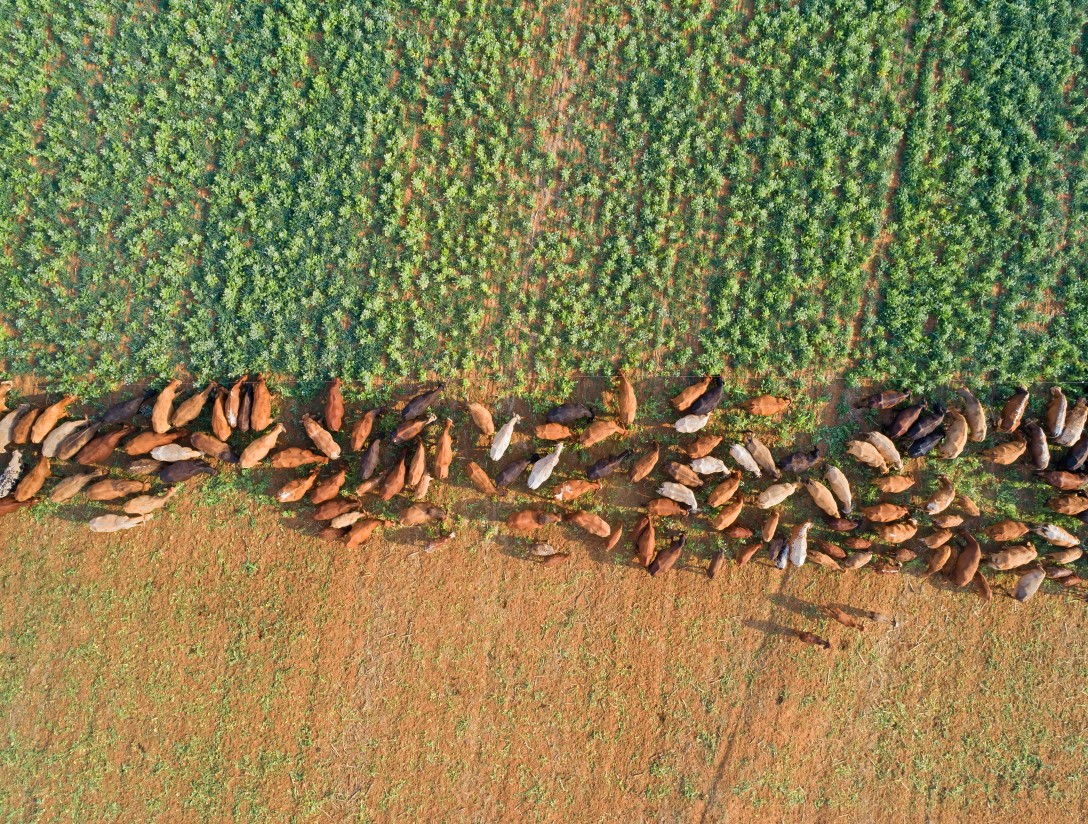Redesigning S4S’ Solar Conduction Dryer to Further Empower Rural Farmers in India


Recently Factor E and portfolio company S4S Technologies took on the challenge of redesigning their patented solar conduction dryer technology. The goal was to reduce production cost, simplify the manufacturing and assembly processes and add functionality to the technology in preparation for a substantial increase in production.
A solar conduction dryer (or SCD) is a solar-powered food dehydrator using natural conduction as a primary heat transfer mode and secondary modes of convection and radiation to reduce moisture content within agri-produce. This allows farmers to preserve their produce without any added preservatives for up to a year, all while retaining better nutritional value than open sun drying. The SCD is completely electricity-free, has no operating costs and is 3-5 times less expensive than competing solar dryers on the market. Making it ideal for farmers located in rural, underdeveloped areas.

With the use of the SCD, farmers can typically earn 50-200% additional profit through the sale of their dehydrated products back to S4S. The reduction of post-harvest losses means the farmer’s profit increases, and through the export of dehydrated product, S4S projects it will support GDP growth. Furthermore, the SCD is projected to save 60 million tons of fruit and vegetable losses annually while creating jobs for rural men and women.
Sounds great, right? So how can we make it even better?
To date, S4S has currently produced around 2,500 dryers total. Selling (without subsidy) and operating them in India, Kenya, Sri Lanka, Jamaica, Nepal, and Vietnam. Now, S4S is planning to produce over 200,000 in the next five years entering new markets including many states across Southeast Asia and Africa. In order to do this, the SCD design needed to be reconsidered for manufacturing at a much higher volume and for a faster rate of production and assembly.
The best and most reliable way to gather information is to get it first-hand. That prompted Factor E’s Industrial Design Lead, Jordan Westerberg, to travel to Maharashtra, India and meet with the S4S team and the farmers who used the SCD daily. It was important to conduct an in-depth investigation in order to gain a better understanding of how the SCD is made, assembled, and used in the field. Factor[e] and the S4S team identified specific manufacturing bottlenecks and component limitations that were in need of improvement.
Through our thorough study of the product, we identified five key areas for improvement:
- The side structure, like a majority of the unit, was made up of stainless steel sheet metal. Sheet metal bending, welding and riveting proved to be tedious work and costly in small to medium quantities.
- The polycarbonate multiwall sheets and steel parts, when assembled at the factory, were more than 2.2 meters long, making it very difficult to ship and prone to damage during transport.
- The SCD as a ‘DIY’ kit. Customers must be able to assemble or disassemble the SCD on their own. This usually would take 20-30 minutes using two or more people. When there are a large number of SCD’s to be assembled, the process becomes extremely tedious and time-consuming.
- Loading and unloading of the tray is a laborious task. These parts of the drying process were in need of improved usability and ergonomics.
- The opening of the SCD. Air enters over the drying tray through convection at the same opening where the tray is loaded and unloaded. This opening must allow air to flow through the SCD, but must also prevent any dust, insects or rodents from entering.
Pull these insights together and you find the need for:
- Simplified manufacturing
- Reduced cost of manufacturing
- Part size and weight reduction
- An improved assembly process and improved ergonomics
This concluded often times the most difficult, yet critical part of the design process. Design research and information gathering is almost always imperative when trying to not only create the optimal user experience but also to optimize manufacturing and assembly techniques. Taking time to empathize with all of the people that will interact with the product across its entire product lifecycle allows us to turn that understanding into actionable insight and improve the overall design. Through this research phase, we particularly relied upon qualitative research techniques (i.e. contextual inquiries, in-depth interviews, usability sessions), which provided valuable and tangible information and actionable insights, which launched our design process.
Once the data was gathered, it was back to the drawing board, literally. Using all of the information and insights accumulated during the trip to drive the redesign, we focused our attention on our five key takeaways.
We prioritized simplifying the manufacturing of the unit knowing that it would directly reduce manufacturing cost. We turned our attention towards the side structure or ‘shelf.’ The shelf acts as the main structural component and anchor of the entire assembly. Every additional component stems from the shelf and allows multiple SCDs to be linked together.
The shelf needed to be resilient, repeatable, symmetrical and able to receive hardware. Given these needs, injection molding was clearly the best approach. Molding would give us the ability to produce a large quantity of parts quickly while providing much higher tolerances to fit the secondary components together. We designed the part to be a simple, single-action injection mold from ABS plastic. ABS plastic has great heat and impact resistance and a good strength-to-weight ratio (excellent qualities for this context). Molding also presented the opportunity to include additional functionality: receiving slots for the polycarbonate sheets, hardware mounts and thru-holes, and ribbed reinforcement. Additionally, we had the ability to promote the product via in-molded branding.

Because the SCDs were most often delivered as DIY kits to the farmers, the process of assembling and maintaining the unit had to be meaningfully simplified. With the new molded shelf, we were able to reduce the overall amount of hardware required and theoretically reduce assembly time by 60% percent while only requiring one person.
Largely as a result of reducing the original 5kg metal shelf to a 1.4kg plastic shelving unit, the overall weight of the assembly is also set to be reduced by around 15kg.
With the anchor component re-Imagined, the rest of the redesign pathway was clear. We developed a simple stamped and welded connection flange that utilized the shelf as an anchor point. The flange held the two shelves together at 4 different spots via connection rods (flat stock steel) ultimately making up the drying area of the SCD. In-between the now connected shelves, the polycarbonate sheeting that makes up the glazing panel and chimney are held in place. A newly designed gate utilizes a hardware-less, molded track built into functional ribbing on the shelf. This covers the front portion of the SCD and is equipped with a replaceable metal screen to allow convection airflow through the dryer while keeping insects and dirt from entering.
The SCD is complete with an adjustable leg assembly mounted to the four front corners of the shelving parts. It was imperative to the entire design that we addressed the ergonomics and usability issues discovered through our design research. By utilizing a simple telescoping tube steel design, users are now able to effectively adjust the height of the dryer from .45m (18in) up to .86 (34in) tall. This brings the tray of the SCD around waist height and eliminates the drudgery of bending for the farmer that occurs when continuously loading and unloading. This also significantly reduces exposure to dust and insects since the trays are no longer located at ground level.

The ultimate goal of the redesign was to increase value by designing the SCD units to be more cost-effective. However, when a design can also add value to the user through added feature-function, better ergonomics and simplified usability, we consider the project a success. A redesign that reduces costs and improves usability creates value for the company and the customer. In other words, good design drives return on investment up and improves the overall success rate of companies. Though still currently in the early stages prototyping, the redesign of the SCD is projected to reduce the cost of the dryer assembly by 53% (per unit), trim the overall weight of the assembly by over 33% and significantly dropping the overall number of parts. With a lighter, more affordable, more readily assembled, and easier to use SCD, S4S is now poised to scale-up manufacturing and hit their 200,000 unit goal.
"The project has been demandingly detail-oriented but proved to be a very enjoyable and inspiring experience. I have been fortunate to work with a talented group of engineers, manufacturers and business men and women from halfway across the world who are motivated to do good. It has challenged my conventional approach to the design process due to the inherently stringent constraints presented when building a product that will be implemented into rural areas with very limited resources. It has been gratifying to help design a product that is poised to empower so many people."
Jordan Westerberg
full article
Thank you! You can now enjoy the full article
Like what you see?
Sign up for our newsletter
Thanks for signing up. We can’t wait to keep in touch.


